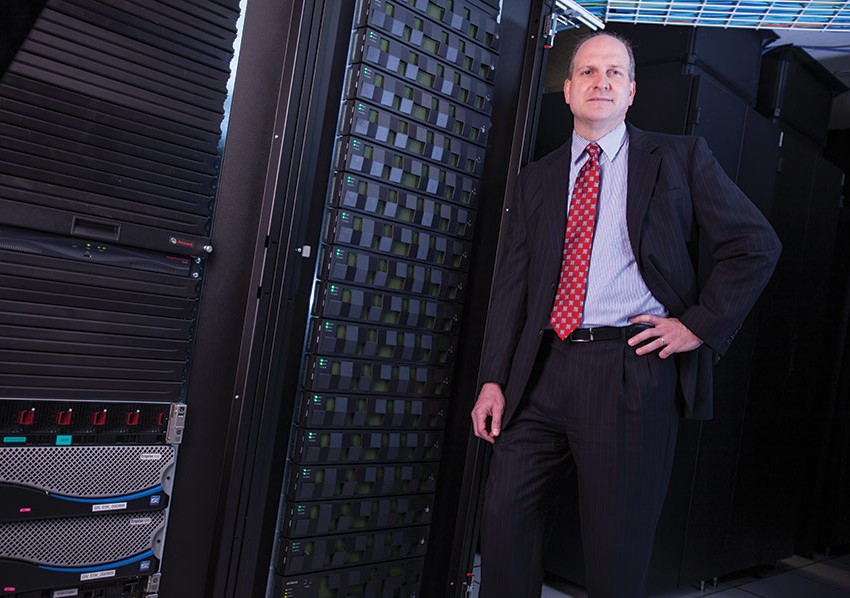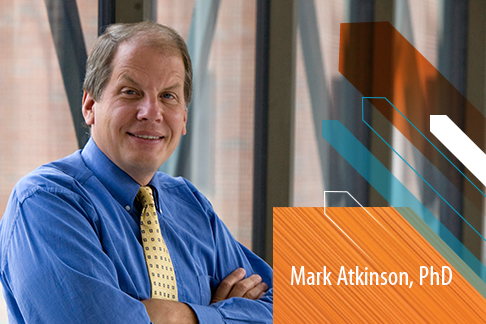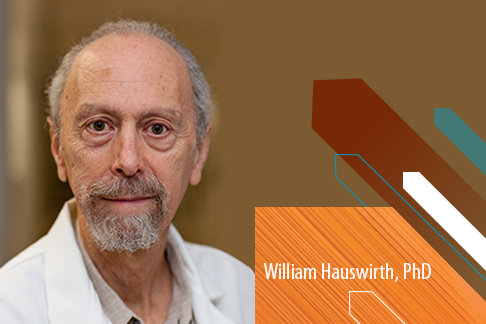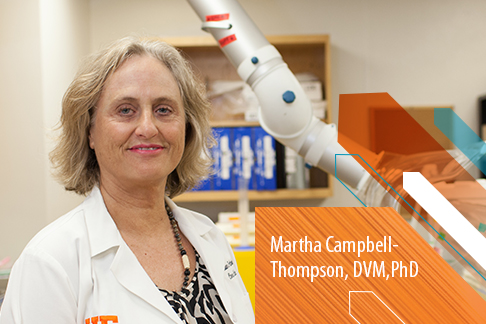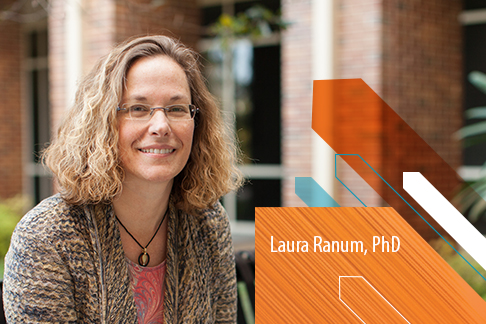UF Medicine on the rise
In early 2013, the University of Florida made a pledge: to better itself.
In early 2013, the University of Florida made a pledge: to better itself. It had good reason — and good ability. UF will begin receiving $15 million per year for five years after Gov. Rick Scott signed a bill that designates UF as preeminent. The goal? To rocket the university up to top 10 status. With the newfound support from Florida’s lawmakers and approval from UF Trustees, the university launched UF Rising last year — its five-year initiative to support the preeminence plan and elevate UF among the nation’s top public research universities.
The initiative targets investments in both faculty and students by hiring faculty “all-stars” to help strengthen existing work in high-potential areas of science and scholarship. The UF Foundation is supporting the plan with an $800 million fundraising campaign to add more than 100 new endowed professorships, as well as upgrade and add facilities.
“Being a top 10 university isn’t about bragging rights; it’s about being an institution that is among the best at fulfilling its missions of research, education, service and economic development,” said UF President Bernie Machen. “We already have terrific people with the will and drive to push us to the top. With the right resources, there’s no doubt in my mind we’ll get there.”
Paving a path to preeminence
Before the official campaign, the UF College of Medicine was already rising — paving its own path toward preeminence through exceptional progress in its clinical care and education enterprises, and most notably, through research funding. The momentum began four years ago in 2010 when the college garnered about $62 million in National Institutes of Health research grant funding. In 2011, that funding rose again, to $72 million, and shot up again, in 2012, to about $84 million.
Then the 2012 Budget Control Act — sequestration — happened. NIH had to slash its budget by $1.7 billion, or 5 percent. But even during that decline, the UF College of Medicine reversed expectations: Its 2013 NIH funding rose a little over 1 percent, to $85 million.
“The last four years, funding has increased more than the four years previous,” said Thomas A. Pearson, MD, MPH, PhD, executive vice president for research and education for UF Health. “It’s the highest year-over-year-percentage increase of any medical school
of any major research university.”
UF’s medical faculty weren’t waiting for an initiative to tell them to be great. They were already doing great things.
“It’s not the institution that gets the grants. It’s the faculty. The faculty are what drives these innovative ideas,” said Michael L. Good, MD, dean of the College of Medicine. “Our first priority is always to retain the outstanding faculty we already have.”
Stephen Sugrue, PhD, professor and senior associate dean for research affairs at the College of Medicine, and Good partnered about five years ago to analyze where the college’s funding was coming from. They also assessed what type of funding the school was receiving.
“Our basic research funding was comparable to our peer schools and some aspiring schools,” Sugrue said. “But where we lagged behind was in our clinical research funding. Clinical grants are bigger grants.”
By filling key leadership positions in clinical departments like pediatrics, medicine and neurology, and placing emphasis on clinical research awards, the college has improved its translational research programs at an extraordinary pace, Sugrue said. He pointed out that half the rise in funding dollars is equally attributed to established faculty and new faculty.
The hiring spree
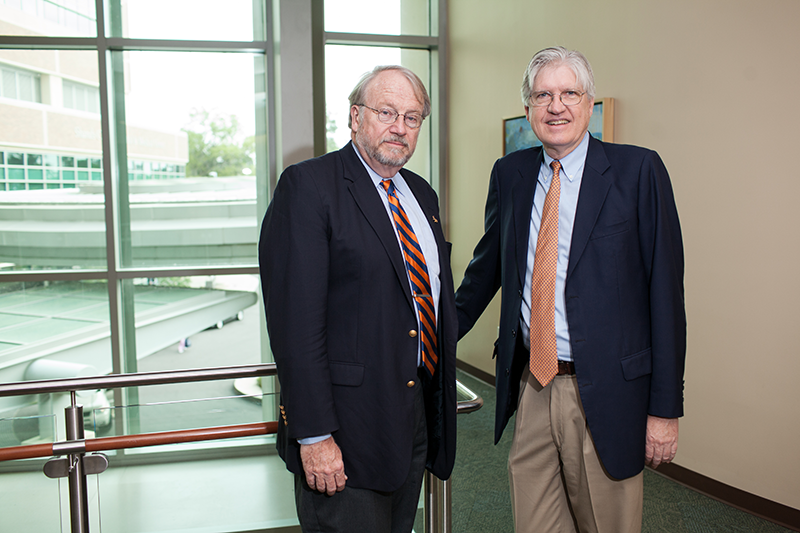 Thomas A. Pearson, MD, MPH, PhD, executive vice president for research and education for UF Health (pictured left), recently began in the newly created position and will serve as a catalyst for advancing the research and education missions of the academic health center. Stephen Sugrue, PhD, senior associate dean for research affairs at the UF College of Medicine, said the college’s forward motion in research funding and new state support will make it that much easier to recruit new faculty.
Jesse S. Jones
Thomas A. Pearson, MD, MPH, PhD, executive vice president for research and education for UF Health (pictured left), recently began in the newly created position and will serve as a catalyst for advancing the research and education missions of the academic health center. Stephen Sugrue, PhD, senior associate dean for research affairs at the UF College of Medicine, said the college’s forward motion in research funding and new state support will make it that much easier to recruit new faculty.
Jesse S. Jones
On the heels of the College of Medicine’s recent growth in collaborative research and NIH funding, UF’s preeminence plan aims to add a slew of new faculty — faculty whose research crosses departmental boundaries. And all the forward motion from UF and the medical school will make it that much easier to recruit them, Sugrue said.
“These kinds of data are incredibly impressive to our candidates coming in because they’re coming from schools that are throttling back,” he said. “They’re coming from schools where they can say the grass at UF is indeed greener. That’s why the timing of preeminence is perfect for us; we’re on the upswing.”
While the UF College of Medicine celebrates its rise to the upper third of medical schools with regard to NIH funding and its climb in the Blue Ridge Institute for Medical Research rankings from 62 in 2009 to 45 in 2013, the dean is not resting on the school’s laurels.
“Despite our success, we still have a long way to go,” Good said. “We celebrated getting to the top third. Now, we’d like to be in the top quartile.
“All of the preeminence initiatives build on our existing strengths. We are already very good, but we plan to, and will be, even better.”
New faculty to fit into the big picture
Tackling the world’s most complex problems together
Through remarkable productivity and innovation from its faculty — particularly at UF Health — UF has achieved excellence with fewer resources than many of its peers. With the help of new state money and an $800 million fundraising campaign, the university has embarked on a hiring spree of catalysts to help speed the rise of strong programs toward best in class. The new faculty hires through UF’s preeminence plan will be chosen based on how they fit into the university’s big picture rather than to simply fill departmental vacancies, explained UF Provost Joseph Glover.
“The increasingly complex problems we face in society usually can’t be solved with a single kind of expertise,” Glover said. “Throwing more minds at a question won’t necessarily accelerate discovery if they all attack the problem from the same perspective.”
Of the 16 initiatives slated to receive funding through the state-backed preeminence plan, five are tackling some of today’s most pressing health care challenges.
Using Big Data to translate information into better health
Big data is the hottest trend in technology — a revolution that some say is on par with the Internet or perhaps even the printing press. Big data is used to describe the exponential growth and availability of data and the ability to crunch that vast quantity of information, analyze it and draw conclusions that could change our lives.
William Hogan, MD, a biomedical informatics professor, understands as well as anyone the power of all that information, particularly on human health. As we figure out the science of informatics, we can better understand the science of genetics, biology and disease, he said.
“There is a tremendous amount of potential for what we can do for everyone involved in scientific discovery by improving how data are managed,” said Hogan, who has been tapped by UF to develop a plan for using informatics in the translation of scientific discovery at UF Health. As one of the first preeminent faculty positions filled at the College of Medicine, Hogan joined the department of health outcomes and policy June 2.
Hogan will serve as director of biomedical informatics for the UF Clinical and Translational Science Institute and will be part of UF’s newly established Informatics Institute, which is made up of a multidisciplinary team of researchers and relies on assistance from HiPerGator, the state’s most powerful supercomputer, to harness the power of big data now available thanks to the Internet, social media, mobile devices and electronic medical records.
“Bill’s expertise in medical informatics and experience in facilitating large-scale research collaborations will strengthen and accelerate our vision for linking data, health systems, communities and populations across Florida and nationally to improve health care and health,” said David R. Nelson, MD, an assistant vice president for research at UF and director of the CTSI.
Hogan first explored the artificial intelligence of a computer during high school when he wrote programs for his Commodore 64. Today, he is a nationally known leader in interconnecting systems for electronic health records and in the use of information technology to improve biosurveillance.
By building on the existing program and adding more brain power, UF looks to be at the front of the big data revolution — realizing what’s at stake could be our ability to predict and possibly prevent the spread of the world’s next pandemic or a therapeutic solution for diseases like Alzheimer’s.
Solving the mysteries of disease through metabolomics
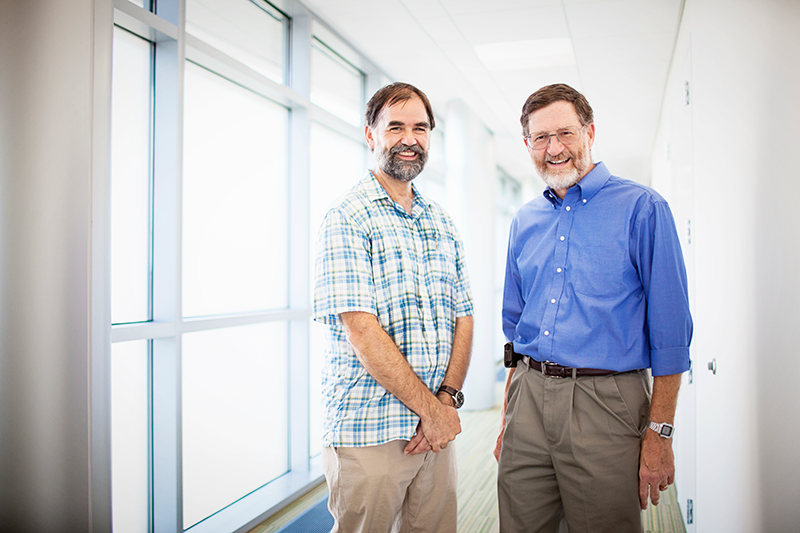 Led by Art Edison, PhD, left, a professor in the department of biochemistry and molecular biology, and Richard Yost, PhD, a professor in the department of chemistry, a multidisciplinary team of metabolomics experts from UF and partner institutions received a five-year, $9 million grant from the National Institutes of Health to launch the Southeast Center for Integrated Metabolomics as part of the UF Clinical Translational Science Institute.
Maria Belen Farias
Led by Art Edison, PhD, left, a professor in the department of biochemistry and molecular biology, and Richard Yost, PhD, a professor in the department of chemistry, a multidisciplinary team of metabolomics experts from UF and partner institutions received a five-year, $9 million grant from the National Institutes of Health to launch the Southeast Center for Integrated Metabolomics as part of the UF Clinical Translational Science Institute.
Maria Belen Farias
As UF scientists work to uncover clues that can solve the mysteries of disease, one group is targeting metabolites, small molecules that result from the chemical processes that fuel and sustain life.
Metabolites play many roles, like chemical signaling, converting food into energy and acting as the starting materials for DNA, proteins and everything else in the cell. And in many ways, these metabolites are complex mysteries themselves.
Using scientific surveillance techniques, investigators with UF’s newly launched Southeast Center for Integrated Metabolomics can learn more about metabolites and close in on the main culprit of disease. Art Edison, PhD, a professor in the department of biochemistry and molecular biology, and Richard Yost, PhD, a professor in the department of chemistry, are principal investigators on a $9 million grant from the NIH to create the center as one of only six such centers funded nationally.
Part of the UF CTSI, the Southeast Center for Integrated Metabolomics brings together expertise and resources from multiple colleges and units at UF as well as Sanford-Burnham Medical Research Institute at Lake Nona, the National High Magnetic Field Laboratory, The Ohio State University, the University of Georgia, Imperial College London, the University of Geneva and industry partners IROA Technologies and Thermo Fisher Scientific.
“We’re excited to join the international metabolomics community in helping science better understand when and where disease happens,” Edison said. “By measuring metabolites, we can get a unique window into disease.”
A presidential initiative to map the brain
A third of all human disease is related to the nervous system. Understanding the structure and function of the brain will lead to therapies for brain disorders. UF plans to be a major player in the recently announced decadelong brain research initiative that will include a federal investment of $100 million.
Global Health initiative
UF plans to build on its strengths in both veterinary and human medicine to become a world leader in the science of infectious and zoonotic diseases such as SARS, dengue and West Nile virus. This is especially crucial given Florida’s location as a gateway for invasive species and disease.
Personalizing medicine
UF is a leader in enabling doctors to pinpoint the medicine that will work best on an individual patient through analysis of his or her genes. Julie Johnson, PharmD, dean of the College of Pharmacy, has been leading a team to implement routine genetic testing for cardiology patients to indicate an individual’s likely response to a commonly prescribed anti-clotting drug.
Approximately one quarter of patients tested have a genetic variation for which a different medication is recommended. Those results are now stored in the UF Health electronic medical record system, which will alert doctors to prescribe alternate medications, should the patients need it in the future.
One of three initiatives funded nationally by the NIH to test the feasibility of incorporating genomic medicine into clinical practice, the UF Health Personalized Medicine Program is now turning its attention to other types of medications using the same process.
With the expertise and leadership of new faculty hires, UF Health scientists and physicians can expand their ability to pioneer and prepare for more comprehensive approaches to genomic medicine in everyday health care. That means a patient’s doctor will be able to go beyond evidence that suggests what works for most people and look at his or her genetic fingerprints to see what works best for that specific patient.
The College of Medicine’s rise in federal funding is linked to established faculty as well as new faculty hires, as demonstrated by these 2013 awards:
Seeking a cure to Type 1 diabetes
PI: Mark Atkinson, PhD ’88, American Diabetes Association eminent scholar
UF faculty member: 24 years
Project’s five-year budget: $6.3 million
Using gene therapy for clear sight
PI: William Hauswirth, PhD, Maida and Morris Rybaczki eminent scholar chair in ophthalmic sciences
UF faculty member: 38 years
Project’s five-year budget: $9.9 million
Studying the processes that sustain life
Co-PI: Art Edison, PhD, a professor in the department of biochemistry and molecular biology
UF faculty member: 18 years
Project’s five-year budget: $9.9 million
Predicting and preventing Type 1 diabetes
PI: Martha Campbell-Thompson, DVM, PhD, a professor in the department of pathology, immunology and laboratory medicine
UF faculty member: 24 years
Project’s total budget: $964,046
Finding the underlying causes of neuromuscular diseases
PI: Laura Ranum, PhD, director of the Center for NeuroGenetics
UF faculty member: four years
Project’s five-year budget: $7.5 million
A new approach to seeking therapies for Alzheimer’s disease
UF PI: Todd Golde, MD, director of the Center for Translational Research in Neurodegenerative Disease
UF faculty member: five years
Project’s five-year budget: $7.9 million


